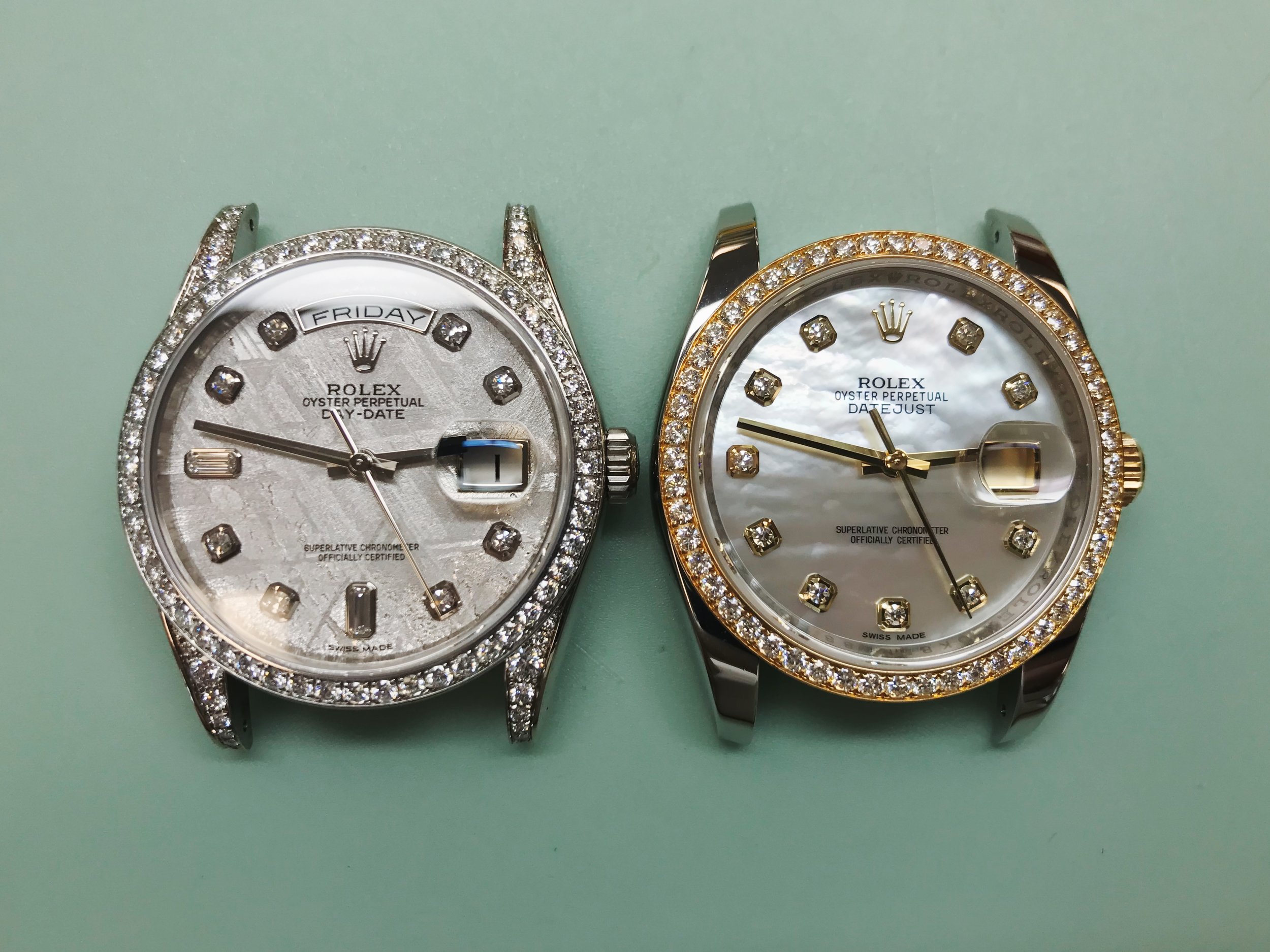Water Resistance Testing

Water resistance testing is an extremely important part of any full watch service, though unfortunately it is often skipped or rushed.
Water is very very bad for the insides of watches, whether they're electronic or mechanical. Circuit boards can short out, steel components can rust in a heartbeat, and dials can be irrevocably damaged by even slight amounts of moisture.
There are two main types of pressure testers, broken down into "wet" and "dry."
Dry testers are usually smaller, cheaper and much quicker to use than their wet counterparts. Instead of water, they use air in a sealed chamber to determine whether a watch can withstand pressure or vacuum without leaking. Since airtightness is better than watertightness, a test in air should theoretically prove the watch's ability to withstand water.
Instead of measuring the total volume of air in the container, dry testers use extremely sensitive probes that measure the actual deformation of the case as it expands in vacuum and collapses in pressure.
The typical deformation is extraordinarily small—measured in microns. If no deformation is detected, the machine will assume that the watch has leaked, equalizing the pressure inside and outside the watch.
Wet testers use actual water to test water resistance, which can be a little scary. Typically, we test cases without the movement installed to make sure that they pass without endangering anything inside. The process takes place over three different machines, and is much more complex.
The vacuum tester, affectionately called the "fishbowl," allows the watchmaker to actually see the source of leaks. The watch is placed in the water and the container is sealed before depressurizing. If there's a leak, air inside the watch will escape in a stream of bubbles as the higher pressure inside the watch case tries to equalize into the vacuum around it, as seen in the photo above. The leak is coming from the crystal gasket at just about 11:30.
There are plenty of stationary bubbles as well, but those can be ignored. There's plenty of air that gets trapped in and around a watch case as it's lowered into the water (especially on a diamond-set bezel like this), and those will pop out onto the surface as the vacuum is drawn. If they stay attached or float away without forming a stream, they're harmless.
Next is my favorite of the machines, the Fathometre. This is a seriously-built device that can create up to 128 bar of pressure for testing truly hardcore dive watches. Of course, it can also test typical 10 bar and 30 bar watches as well.
Unlike the vacuum tester, this is a blind test, which will only be visually verified by the next machine. The watch goes in the chamber, the lid is sealed, the chamber is pressurized to the target depth for a length of time, and the chamber is depressurized. Short of a catastrophic case failure (which you'll hear and will set off alarms), there's no way to tell if water is being forced inside the watch.
That's where the hot/cold plate comes in. First, the watch is placed on its back on the hot plate for several minutes, heating any moisture inside the case.
Next, the watch is immediately placed face-down on the cold probe for 60 seconds.
As soon as the cold probe countdown is finished, the watch is immediately turned over and checked. Any moisture will show up as a condensation fog on the inside of the crystal, which will quickly dissipate. Some moisture is fine—humidity in the air is all it takes for the fog to show up—as long as it goes away within 60 seconds. If not, it's evidence that the pressure tester forced some water inside the case, and it must be disassembled to check for issues.
It can seem like an afterthought to some people, but be sure that you take your watch to a workshop with proper pressure testing equipment. A cheaper job that fails to properly test your watch will be much more expensive down the line if there's a leak!
Watchmaking student at the Lititz Watch Technicum, formerly a radio and TV newswriter in Chicago.














